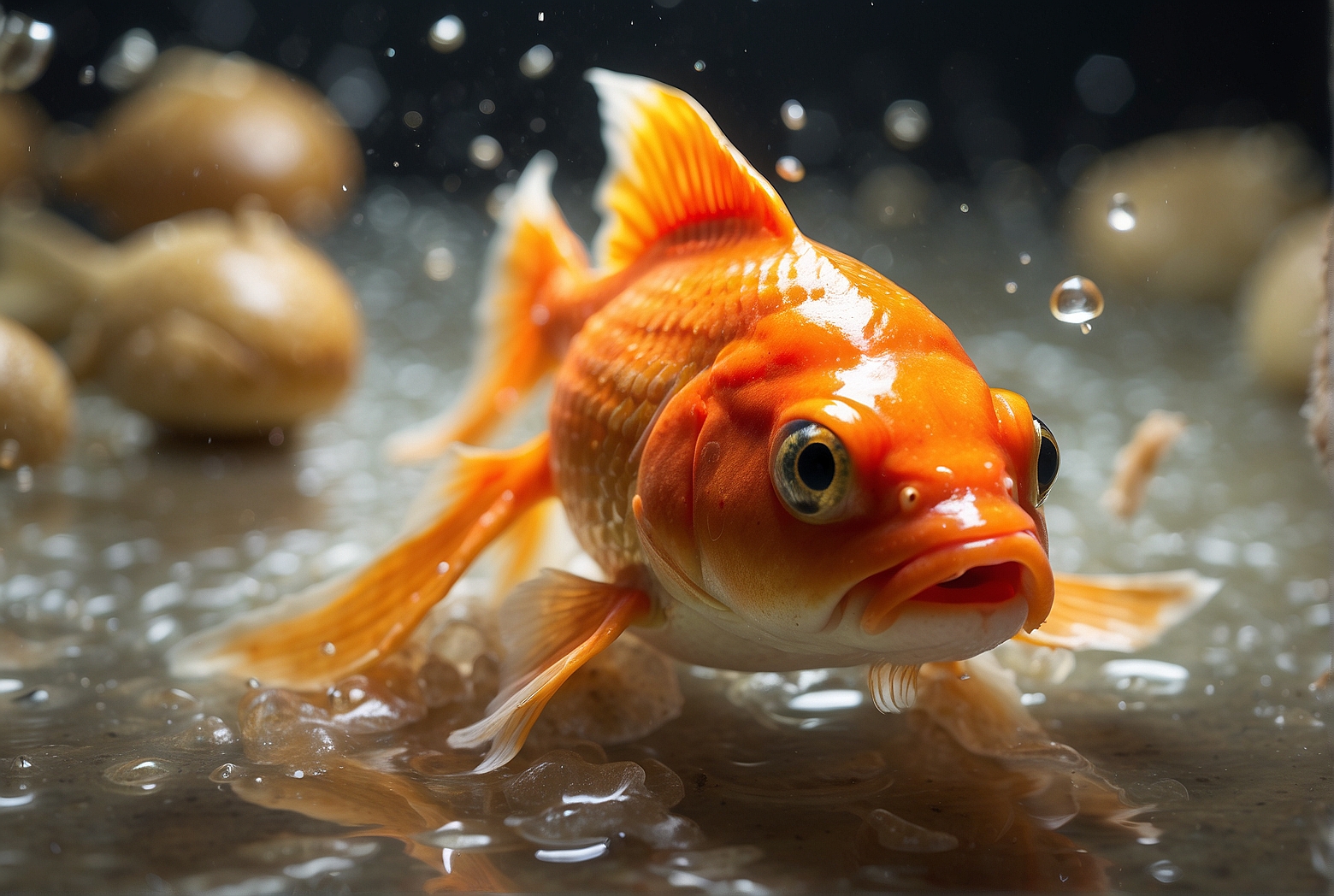Have you ever wondered if goldfish can eat bread? Many people find themselves curious about what types of food they can safely feed their aquatic pets. In this article, we will explore the topic of whether goldfish can consume bread. It’s a common question, and we’re here to provide you with the answer. Stay tuned to find out if your goldfish can enjoy this popular bakery staple!
Introduction
Goldfish are a popular choice for pets due to their vibrant colors and calming presence. These beautiful aquatic creatures require specific care and attention to thrive in a home aquarium. Alongside providing a suitable tank environment and proper water filtration, understanding their dietary needs is crucial to their overall health and well-being. In this article, we will delve into the topic of whether goldfish can eat bread, exploring the potential risks and benefits associated with feeding this common household food to our aquatic companions.
Can Goldfish Eat Bread?
Feeding our goldfish a well-balanced diet is essential for promoting their growth and longevity. While bread may seem like a convenient and readily available option, it is important to consider whether it is a suitable food for our aquatic friends. In this section, we will discuss in depth the implications of feeding bread to goldfish, examining both its potential risks and benefits.
Goldfish Diet
To understand whether bread can be included in a goldfish’s diet, it is crucial to first explore their natural feeding habits. In the wild, goldfish primarily consume a plant-based diet consisting of small insects, algae, and vegetation. Replicating this natural diet as closely as possible is key to ensuring the overall health and well-being of our pet goldfish.
Bread as a Food Option
When considering bread as a potential food option for goldfish, it is helpful to analyze its nutritional value in comparison to their natural diet. Bread, typically made from grains, tends to lack the essential nutrients and minerals required for a goldfish’s overall growth and development. Additionally, the high carbohydrate content in bread may pose digestion issues for goldfish, who are adapted to a diet rich in fiber.
Risks of Feeding Bread to Goldfish
Feeding bread to goldfish can potentially lead to several risks and complications. Firstly, the lack of necessary nutrients in bread may result in malnutrition and stunted growth. Moreover, bread can cause digestive problems for goldfish, leading to bloating, constipation, or swim bladder issues. Additionally, the decomposition of uneaten bread in the aquarium can negatively impact water quality, causing ammonia spikes and potentially leading to harmful algae blooms.
Alternative Food Options
While bread may not be an ideal food choice for our goldfish, there are several alternative options that can provide them with a well-rounded and nutritious diet. Healthy commercial goldfish food, formulated specifically for their dietary needs, is readily available in pet stores. These commercial foods often contain a balanced combination of proteins, carbohydrates, and essential vitamins and minerals necessary for a goldfish’s growth and overall health.
In addition to commercial goldfish food, fresh vegetables such as peas, lettuce, and spinach can be incorporated into their diet. These vegetables not only provide additional nutrients but also aid in their digestion. Another option to consider is feeding goldfish live or frozen food such as brine shrimp or bloodworms. These food sources can provide variety and stimulate their natural hunting instincts.
Feeding Tips for Goldfish Owners
Establishing a proper feeding routine is crucial for maintaining the health and well-being of our goldfish. It is recommended to feed them small, frequent meals throughout the day instead of one large feeding. This helps prevent overeating and ensures that they receive enough nutrients without causing digestive issues. Proper portion control is also important, as overfeeding can lead to obesity and related health problems.
Observing goldfish behavior during feeding can provide valuable insights into their dietary needs. If they are not consuming the food within a few minutes, it is advisable to remove any uneaten portions to avoid water quality issues. Additionally, monitoring their overall growth and appearance can help determine if any adjustments need to be made to their diet.
Consulting a Vet
While goldfish owners can take proactive measures to ensure their pets receive a balanced diet, there may be instances where professional advice is necessary. Consulting a veterinarian who specializes in aquatic animals can provide valuable insights and recommendations tailored to individual goldfish needs. Vets can assess the overall health of the goldfish and provide dietary guidance to prevent potential health issues in the future.
Conclusion
Goldfish are beautiful and fascinating pets that require special care, including a balanced and appropriate diet. While bread may seem like a convenient food option, it falls short in providing the necessary nutrients and may pose risks to the digestive system and water quality. Opting for healthier alternatives, such as commercial goldfish food, fresh vegetables, and live or frozen food, can ensure the nutritional needs of our goldfish are met. By establishing a regular feeding routine, monitoring portion control, and observing their behavior, we can offer our goldfish the best chance at a happy and healthy life. Remember, when in doubt, consult a veterinarian with expertise in aquatic animals to provide the best care for your goldfish.
